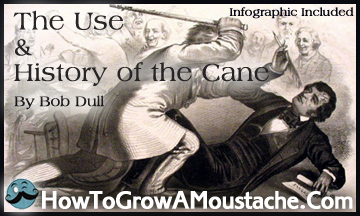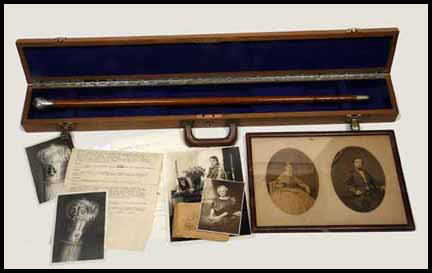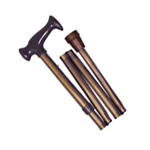The gentleman’s wardrobe in Europe went through a change around the 17th and 18th century. A strong rigid rod became part of the wardrobe, replacing the sword. The walking rod became a substitution of the sword like a weapon.
 Walking sticks today are more like a device to assist people when they are walking helping them to balance themselves. There are many styles and sizes of walking sticks and they’re even wanted by collectors.
Walking sticks today are more like a device to assist people when they are walking helping them to balance themselves. There are many styles and sizes of walking sticks and they’re even wanted by collectors.
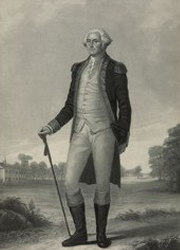 Walking sticks are also recognized to be called hiking staffs, pilgrim’s poles and trekking rods. Hikers use them for many reasons, like to clear spiderwebs or to part thick underbrush, a support to go uphill and a brake while going downhill. They are also used to balance yourself while going across a stream or mud puddle and can be used for defense against any wild animal you run into.
Walking sticks are also recognized to be called hiking staffs, pilgrim’s poles and trekking rods. Hikers use them for many reasons, like to clear spiderwebs or to part thick underbrush, a support to go uphill and a brake while going downhill. They are also used to balance yourself while going across a stream or mud puddle and can be used for defense against any wild animal you run into.
Canes walking sitcks in North America have had a curved top much like a candy cane but just a little longer. LOL They’re made from a heavy metal or wood. In our country the U.S. many presidents have received them being a gift. George Washington received one from Benjamin Franklin and is currently kept in the Smithsonian. The cane is quit nice, it features a gold handle and its in the shape of a Phrygia cap. These days as a rule walking sticks are only seen when a person is wearing formal attire.
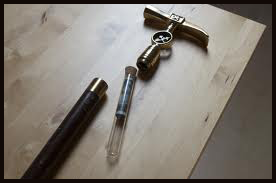 Collectors will always be searching for new, old or novel canes. They’re even looking for canes which are Retractable or have hidden compartments. Some canes that are collectable are canes with unseen compartments that will hold a flask of alcohol, these were generally known as Tippling Canes.
Collectors will always be searching for new, old or novel canes. They’re even looking for canes which are Retractable or have hidden compartments. Some canes that are collectable are canes with unseen compartments that will hold a flask of alcohol, these were generally known as Tippling Canes.
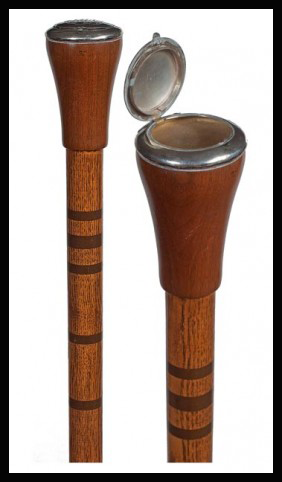 Canes walking sticks are pretty much used today to offer stabilization of anyone using it. It is usually used in the hand opposite the weakness or injury. This allows anyone to shift as much weight as possible away from the weak side. However some do use the cane on the injured side.
Canes walking sticks are pretty much used today to offer stabilization of anyone using it. It is usually used in the hand opposite the weakness or injury. This allows anyone to shift as much weight as possible away from the weak side. However some do use the cane on the injured side.
 Here is an interesting story, politics as usual…
Here is an interesting story, politics as usual…
In a violent episode while in the U.S. Congress, Charles Sumner of Massachusetts called Stephen A. Douglas of Illinois a “noisome squat and nameless animal” and brutally insulted Andrew Butler of South Carolina for a congenital deformity. When a relative of Andrew Butler, Preston Brooks, heard of it, he felt that Sumner’s behavior merited less than a duel and so beat him senseless on the floor in the Senate using a wooden walking cane. Although this event is commonly often known as “the caning of Senator Charles Sumner”, it wasn’t a caning in the conventional (esp. British) sense of formal corporal punishment with a way more flexible and usually thinner rattan.
There are different types of canes, here are 3 to name a few:
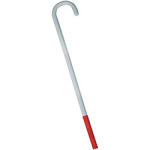 -White canes are mainly used for the blind or visually impaired. There color and style alert others of the impairment of the user. These are made longer and thinner so the individual using it could feel there way around.
-White canes are mainly used for the blind or visually impaired. There color and style alert others of the impairment of the user. These are made longer and thinner so the individual using it could feel there way around.
Canes that are adjustable usually have a telescoping shaft that allows the user to extend it out or shorten it as needed.
– Folding canes as a rule have several joints, they are coupled together by an internal elastic cord, this allows them to shorten the length when they aren’t being used.
– The Quad cane has four legs on the bottom of the cane. With four legs the Quad cane provides a stable base for the person standing.
Canes walking sticks are needed today amongst the elderly and perhaps younger people with disabilities. We don’t appear to use them any more as a trendy item attached to our arm. But to those that need them they supply a great service and allow people to complete things that without the canes they would be at a disadvantage.
Bob Dull Online for about ten years and a person who loves the internet and all it has to offer, I like to write articles about different things and make some extra money as an affiliate marketer.

